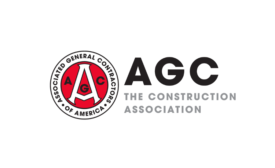State of the Industry
Construction association cautions that new Buy America rules will only add to the pain by limiting contractors’ ability to bargain on pricing for federally funded infrastructure and building projects
Read More
Construction Adds 19,000 Employees in September as Low Unemployment Drives Sector’s Largest Wage Increase for Hourly Workers In 40 Years
Construction workers now earn over $35 an hour on average, while the sector’s unemployment rate hits 3.4 percent as association officials call for construction education funding and immigration reforms
October 30, 2022
Construction Spending Slips in August with Steep Slide in Homebuilding, Mixed Results for Public and Private Nonresidential Categories
Construction association officials say demand for housing and developer-financed projects getting crushed by rising interest rates, but infrastructure, power and manufacturing could gain steam soon
October 23, 2022
Construction Employment Grows In 246 Of 358 Metro Areas from August 2021 to 2022 But Record Openings Show Firms Want to Add More Workers
Houston-The Woodlands-Sugar Land, Texas; Muskegon, Michigan; and Bloomington, Illinois, have largest 12-month gains; Orlando-Kissimmee-Sanford, Florida, and Richmond, Virginia, experience the worst year-over-year decreases
October 20, 2022
Construction Employment Increases In 31 States From July To August Even As Many Firms Report They Are Struggling To Hire Workers
Arizona has largest one-month pickup in jobs, while Minnesota and Wyoming have largest decreases; lack of qualified applicants is major reason for project delays as 93 percent of firms report openings
October 4, 2022
Connect with the industry’s leading resource for unparalleled insights and education.
Join thousands of industry professionals today. Shouldn’t you know what they know?
JOIN NOWCopyright ©2024. All Rights Reserved BNP Media.
Design, CMS, Hosting & Web Development :: ePublishing





